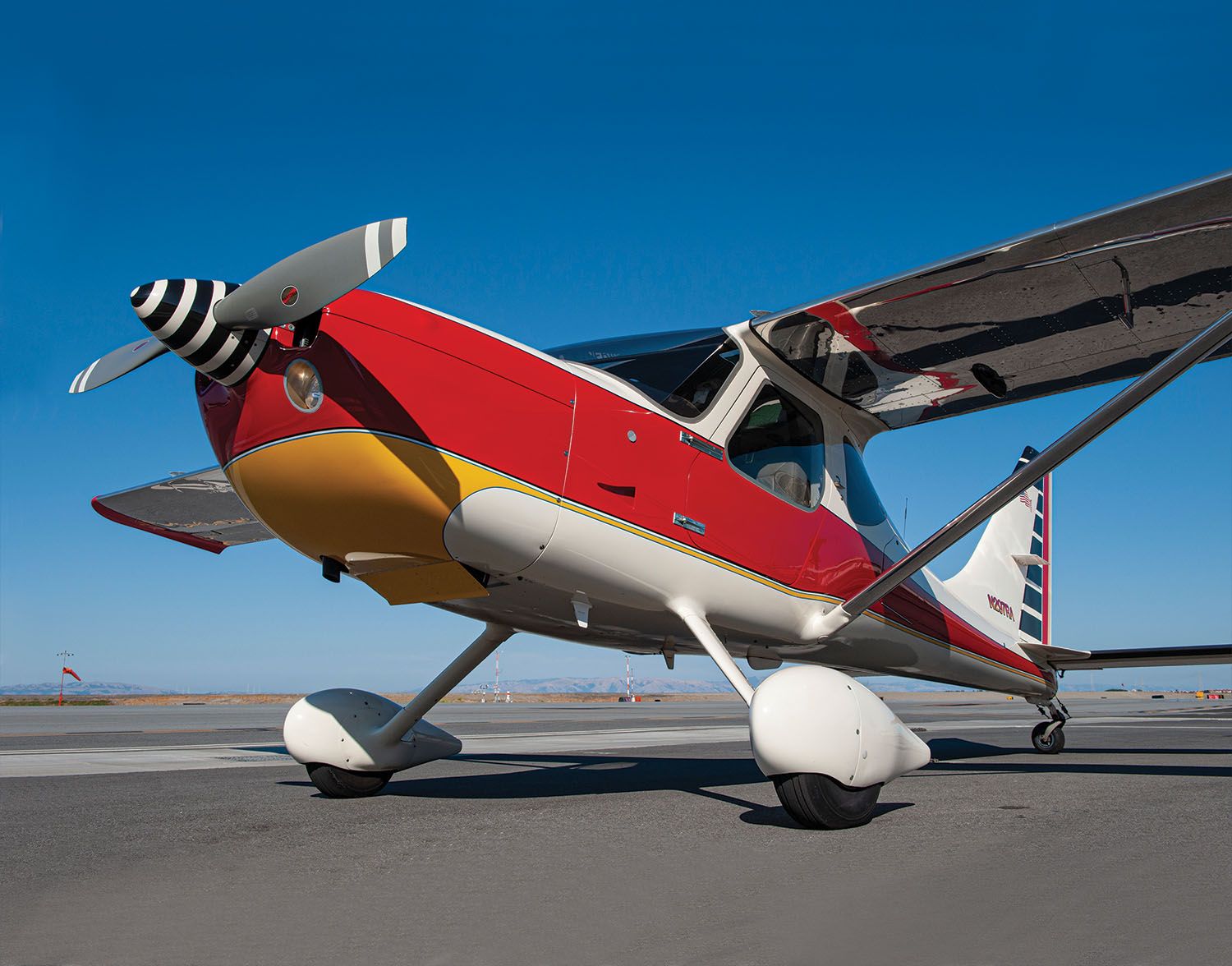 This article begins a new series that takes off from our previous articles on buying a used Experimental/Amateur-Built airplane. Where the previous series took a broad look at the general topic of buying a used Experimental, in this series we will focus on one make and model of airplane at a time, going into the kind of detail a typical buyer would probably like to see.
This article begins a new series that takes off from our previous articles on buying a used Experimental/Amateur-Built airplane. Where the previous series took a broad look at the general topic of buying a used Experimental, in this series we will focus on one make and model of airplane at a time, going into the kind of detail a typical buyer would probably like to see.
Here are the major topics to consider: The history of the make and model, an overview of the design, what to look for with the specific make and model, engine options, typical avionics, common modifications, performance, and owner support—both factory and user groups. As this series unfolds, we would welcome feedback from our readers so we can make this the best go-to source for prospective used E/A-B buyers.
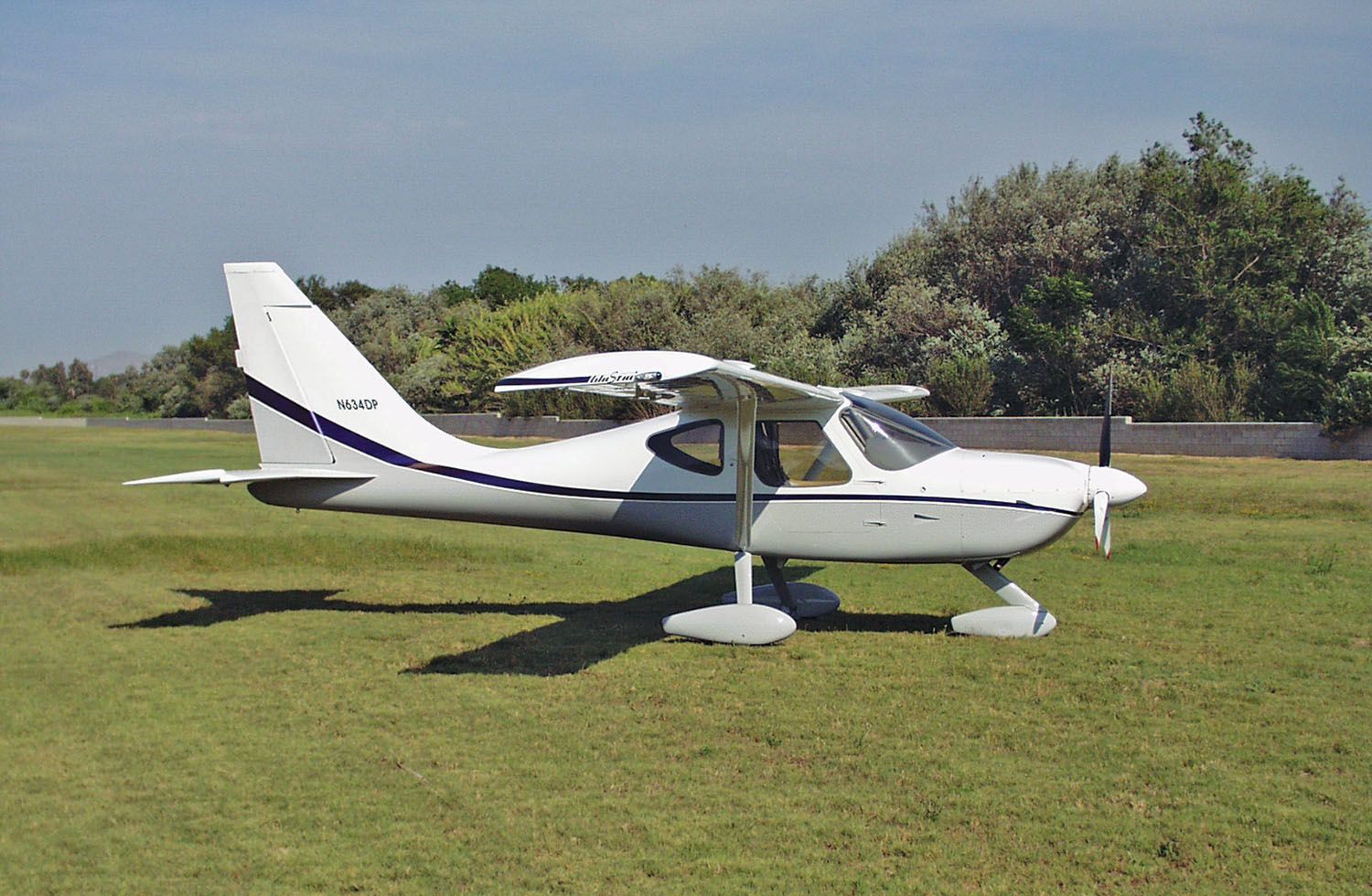
History
The Stoddard-Hamilton GlaStar made its debut in 1994, powered by a Continental IO-240, but before long everyone was using a larger engine. In fact, not more than two or three customer planes ever got built with the Continental engine, with the Lycoming O-320 and O-360 engines being the most popular choices because of cost and the plentiful supply of used examples. A number of builders opted for various versions of the Subaru auto-engine conversion, but many of these planes have been re-engined with Lycomings after a string of inflight engine failures and other problems.
Tom Hamilton was the designer of this popular utility plane, with Ted Setzer doing much of the prototype work and Tom Setzer doing a lot of the detail design work. The GlaStar kit sold very well in its day, with more than 600 of them going out the door by mid 1998, when your author took delivery of his. Unfortunately, Stoddard-Hamilton got into financial trouble shortly after that and was in bankruptcy by 1999. Longtime EAA-er Tom Wathen bought the company out of bankruptcy and formed two new companies, New GlaStar LLC and New Glasair LLC. These two companies were eventually combined into a new company called Glasair Aviation LLC under the direction of Mikael Via. Under his guidance, the design rights for a certificated version of the GlaStar was sold to OMF Symphony that eventually produced a number of certificated airplanes that, unfortunately, did not enjoy a lot of success. However, Glasair used the money from that sale to develop the Sportsman 2+2 and continues to sell this kit today.
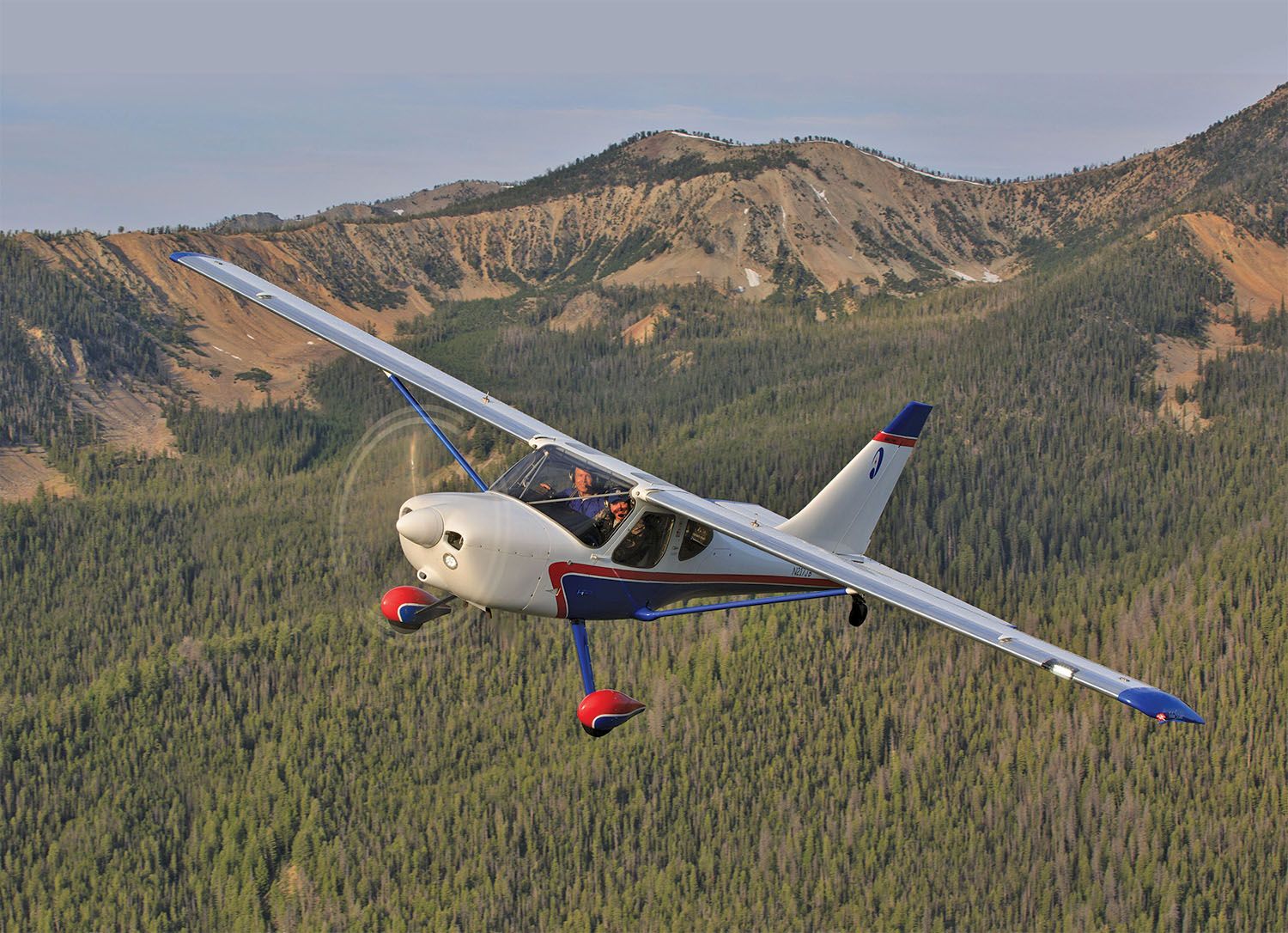
Eventually about 930 GlaStar kits were sold, with an unknown number of these being just tail kits. It is estimated that around 600 whole aircraft have been built, with the majority of these being registered in the U.S., but a significant number also in Canada and Australia. There are also a number of planes in Europe, mostly in the U.K. One even made it to Cameroon, Africa, doing missionary work.
Sadly, when Glasair came out with the Sportsman, they found that the similarity in production costs made it impossible to create enough of a price difference between the GlaStar and its younger brother to keep selling both kits. Thus, even though it did not technically die until 2005, the two-seat GlaStar was effectively done by 2002. At the moment, Glasair Aviation no longer supports the GlaStar except with parts that it may share with the current Sportsman design. Even the fiberglass fuselage molds have been destroyed.
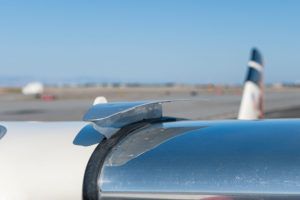
Design
The concept of the GlaStar was a two-place utility plane that could be easily built and easily stored saving the owner money, while delivering a wide performance envelope skewed somewhat towards the low speed range. Easy storage was to be facilitated by folding wings, which became a popular selling feature, but one that was seldom used once the plane was completed. The features that most endeared the plane to future owners were docile stall characteristics, good short field performance, and a claimed 130-knot cruise speed. At the time its main competition was the RV-6 and RV-6A, a design that was clearly faster, but short on useful load and cabin space compared to the GlaStar.
Many people thought comfort and utility were more important than cruise speed, and still do, but once everyone started bumping up the gross weight of the RV-6 to 1800 pounds, against Dick VanGrunsven’s objections, some of the utility advantage disappeared. Both aircraft still enjoy a good reception in the used airplane market, so obviously there was room for both choices.
As the GlaStar left the small-engine concept behind, it became more important to pay attention to the center of gravity, especially with the O-360 and a constant-speed prop. This meant moving the battery as far aft as possible to balance out the weight up front. Even then, some GlaStars would run out of elevator in a full-stall landing, inducing a number of owners to place vortex generators on the bottom of the horizontal stabilizer. A few builders opted for the heavier angle-valve IO-360 engine, but weight and CG considerations made this a poor choice. Most buyers seeking a good used GlaStar prefer to pass on the big angle-valve engine.
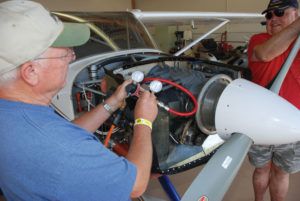
What to Look For
Your buying guidelines should begin with a review of the previous KITPLANES® series on buying a used Experimental airplane. I will not repeat that information here except to say that it is important to do your homework on any used airplane purchase and be sure to get a competent prebuy inspection by someone familiar with the GlaStar.
As with any used Experimental airplane, it is important to review the records with a special eye to the compliance with factory service bulletins. Most of these were likely addressed during construction, but a comprehensive record of compliance it a good sign of a conscientious owner. A complete list of all factory service bulletins can be found online.
Of special note are service bulletins #7 calling for a new strengthened control yoke weldment, #14 calling for added reinforcement in the tail, #43 calling for the addition of header tanks to prevent fuel starvation in long descents, and #49 calling for weld inspection in a limited number of cages that had poor weld penetration.
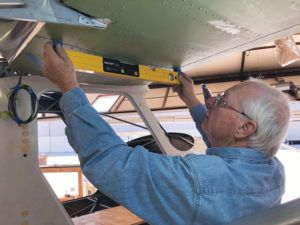
There was also a service bulletin #25 that talked about cages that produced excessive differences in the angle of incidence of the wings, wherein they declared that a variance of 1° was the maximum tolerable variation. However, the truth of the matter is that any variation in excess of 0.1° produces undesirable flying characteristics. Some builders compensated for this by installing aileron trim tabs or adjustable aileron trim, but it is best to check the angle of incidence with a smart level and plan on correcting any discrepancy found by modifying the aft spar pivots.
The GlaStar had very few kits that had improperly heat-treated gear legs that would easily bend. These were quickly identified and fixed. However, the basic design relies on sacrificing the gear legs to protect the cage in case of a very hard landing. For that reason, it is always a good idea to carefully look at the front view of the plane for any signs of a bent gear leg. A ground loop can also bend a gear leg, so it is a good idea to check out taildragger gear with extra care. The good news is that bent gear legs can often be straightened, and replacements are readily available if that isn’t an option.
There are five bulkheads that builders were required to install in the fuselage beginning with the aft end of the baggage area and proceeding toward the tail. There are a number of ways to screw these up, two of which are discussed in service bulletins, but none has resulted in a catastrophic failure to my knowledge. In any case, it is a good idea to have a knowledgeable person help you evaluate the construction of these important items during your pre-buy inspection.
A service bulletin that is easy to miss is #47 that calls for tightened clearances at cable guides. These guides should be fabricated out of 0.025-inch material with a maximum clearance of 0.04 inches. You just won’t see that without taking a hard look at them. This bulletin is important because under higher G loads some aileron cables can go slack, making it easy to come off a pulley. This could result in a jammed control.
Many builders complied with these service bulletins as they were building and may have noted compliance in the builder log. Unfortunately, that information may not be available to a subsequent buyer. Because of that, I would always urge builders to note service bulletin compliance in the permanent aircraft logbook.
Many GlaStars got turned into “FatStars” when builders who added goodies to them were not careful with the little things that can quickly add up. The factory advertised that an empty weight of 1200 pounds was typical for the GlaStar, but I can assure that there are very few such planes in existence. Anything around 1300 pounds is pretty good. Just be wary of those that approach or even exceed 1400 pounds empty. That just doesn’t leave much for fuel and people with a gross weight of 1960 pounds. As with any plane where the gross weight of the builder exceeds the useful load of the airplane, some builders have bumped up the gross weight to make up for it. The GlaStar seems to be able to fly with whatever you can shove in the doors, but expect significantly degraded takeoff and climb performance, especially with an O-320 engine and at higher density altitudes.
Engine Options
The Continental IO-240 of the original prototype was never embraced by the GlaStar builder community. That left the realistic choice of engines to either the Lycoming O-320 (150- or 160-hp versions), or the Lycoming parallel-valve O/IO-360 180-hp engine. In the late ’90s and early 2000s Subaru engines were also popular, but they never met the promises made by those who sold them, forcing many owners to re-engine their planes with Lycomings. (This is a challenging project when you consider all that has to be changed.) As a result, GlaStars that hit the used market with non-traditional engines tend to linger there or sell for much less than those with a Lycoming up front.
A few builders installed angle-valve IO-360 engines to get an extra 20 hp, but these engines were just too heavy to work well, leaving the planes with forward CG and excess empty weight problems, not to mention higher fuel consumption. These problems could be offset by using a fixed-pitch prop, especially a composite prop, but that sort of defeats the purpose of going with a bigger engine. Needless to say, Lycoming clones by Superior or ECI (now Continental Titan) would be suitable substitutes for the same-size Lycoming engines.
Typical Avionics
Most GlaStars were built before the advent of glass panels, so expect to see a lot of “steam gauges” as you look for a used GlaStar. An approach-approved GPS would also be a rare find in a GlaStar unless the owner has upgraded the panel since it was built. Of course, some owners have updated their panels and expect to get a higher price for their aircraft as a result. If you can find such a one, it is a strong inducement to make a deal rather than spend the money on upgrading an older panel. It is always cheaper to let the other guy do the upgrades than to do it yourself, and it saves time.
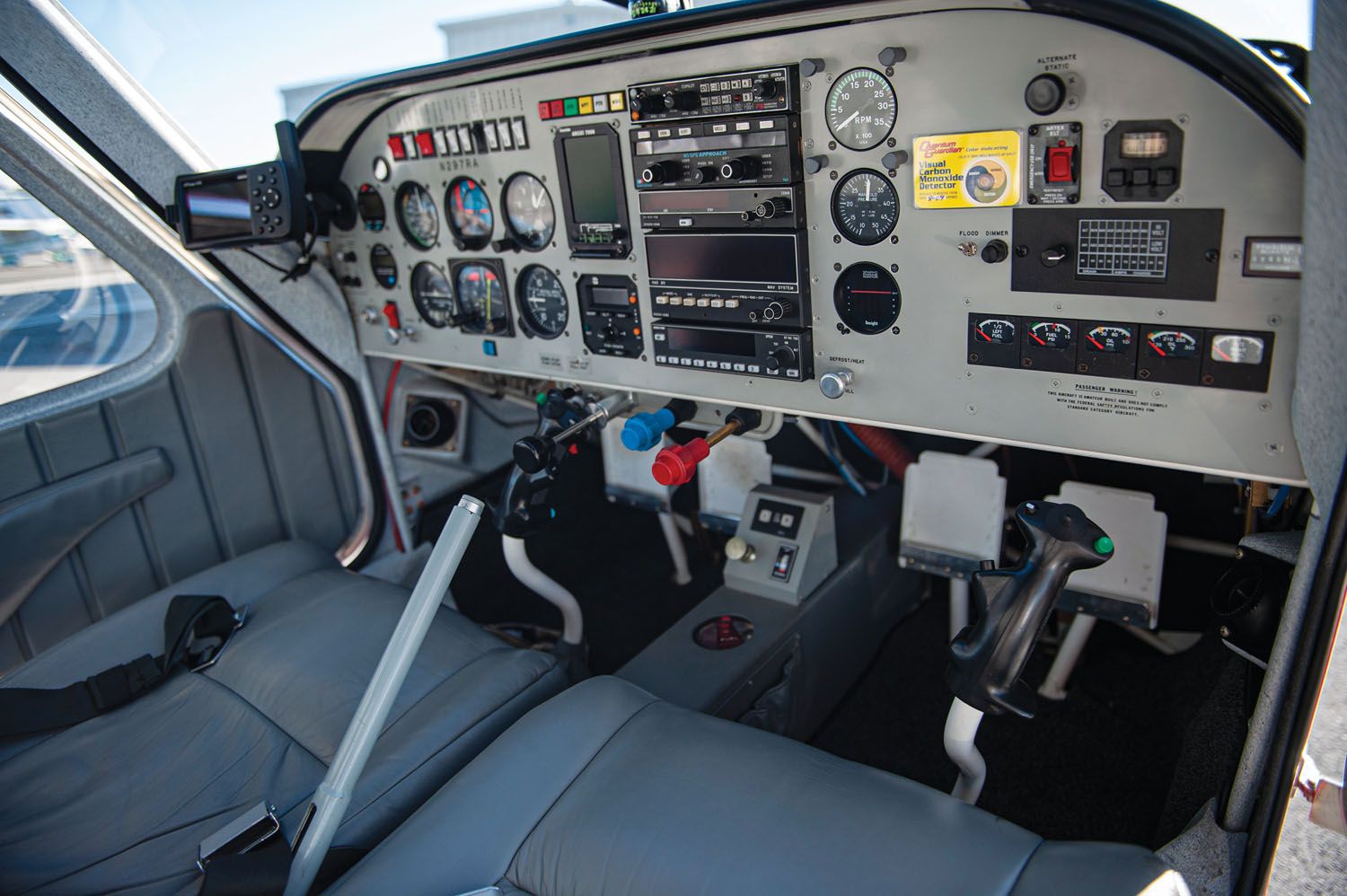
You will see many IFR-legal GlaStar panels if you are willing to limit yourself to VOR navigation, but the utility of such an arrangement seems limited if you have a real need to fly in instrument conditions. Also be sure to check the logbook for the age of the vacuum pump if you are going with steam gauges. These pumps typically fail after 5-600 hours.
If you are looking at a GlaStar based in a less-populated area and flown out of an uncontrolled airport, you may find that the plane is not equipped with ADS-B Out. This will be an immediate expense for you if you need such equipment. Most older planes will also not have a 406 MHz ELT. There is no legal requirement to upgrade the old 121.5 MHz unit, but that frequency is no longer monitored by emergency services.
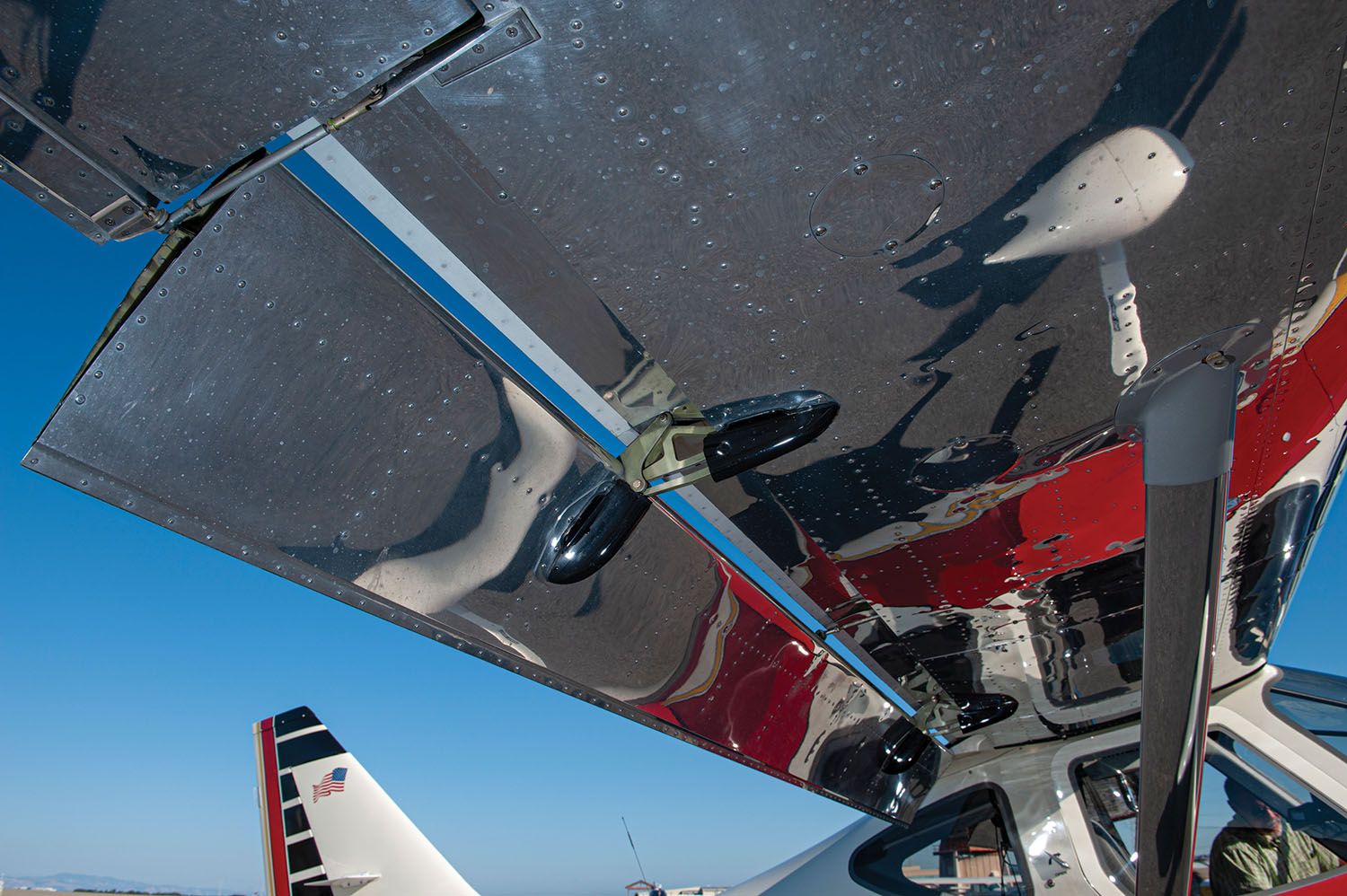
Common Modifications
Since the GlaStar can be built with tricycle gear or conventional gear, it probably isn’t fair to call it a modification to switch from one to the other, and once GlaStars are built few people bother to switch. The good news is that it isn’t very hard to do if you happen to find a good airplane with a gear configuration that you don’t like. Sometimes you can find a builder who set up both sets of gear. You can then put the set you don’t intend to use aside. (But keep it for the next owner!)
Another gear-related option is to upgrade the original 5.00×5 main tires to 6.00×6 tires and wheels. This looks easier than it is, because it requires relocation of the flange that secures the caliper and drilling a second cross bolt through the axle. There are some oversized five-inch tires available, but the six-inch wheels allow for even bigger tires than the popular 6.00×6.
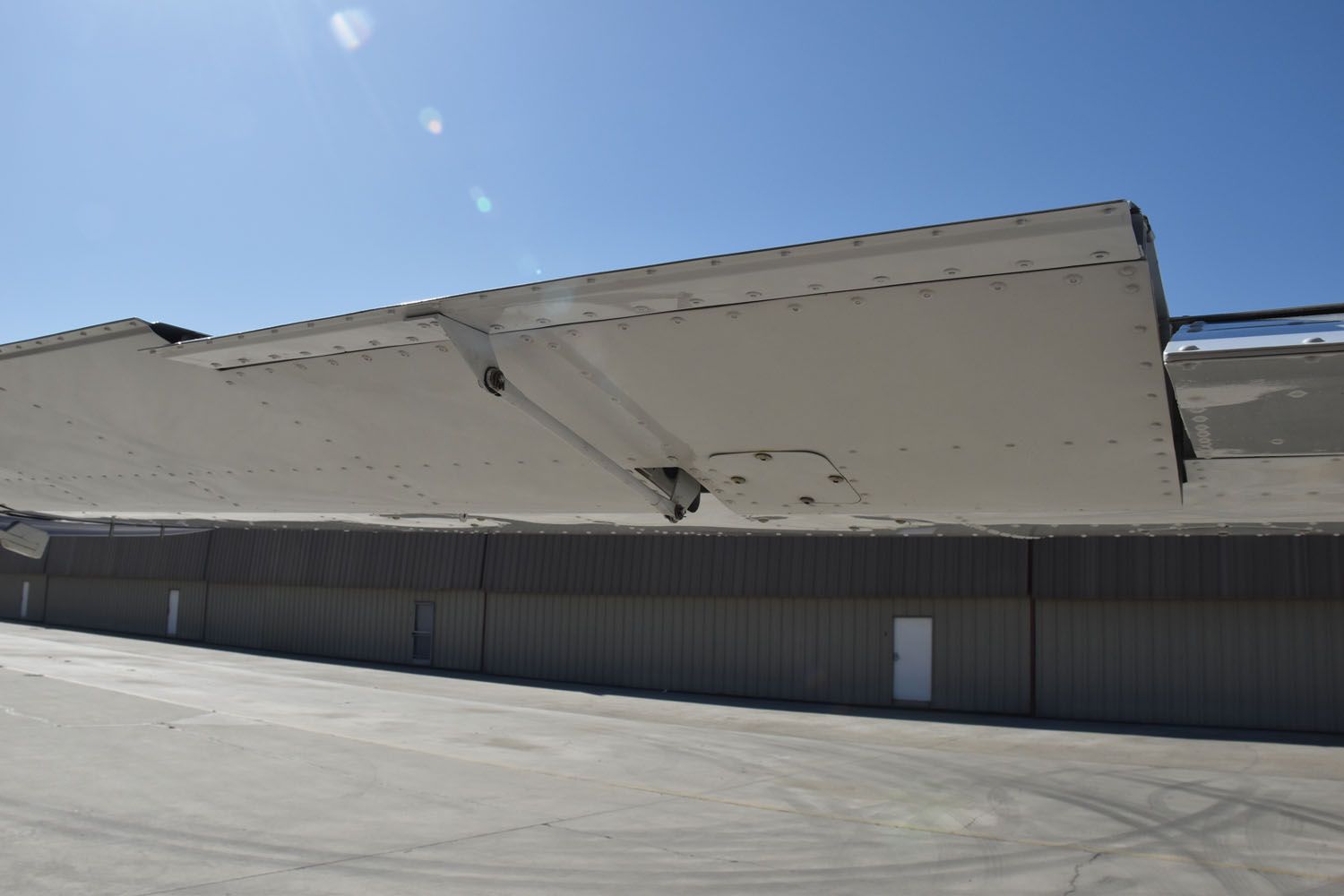
A highly recommended modification is adding an aileron servo tab to the left aileron. This was made standard in the Sportsman and is easily done to the GlaStar. Without the modification the roll forces are rather excessive, especially at high speed, and not well coordinated with pitch forces. The plane handles much nicer with the modification in place.
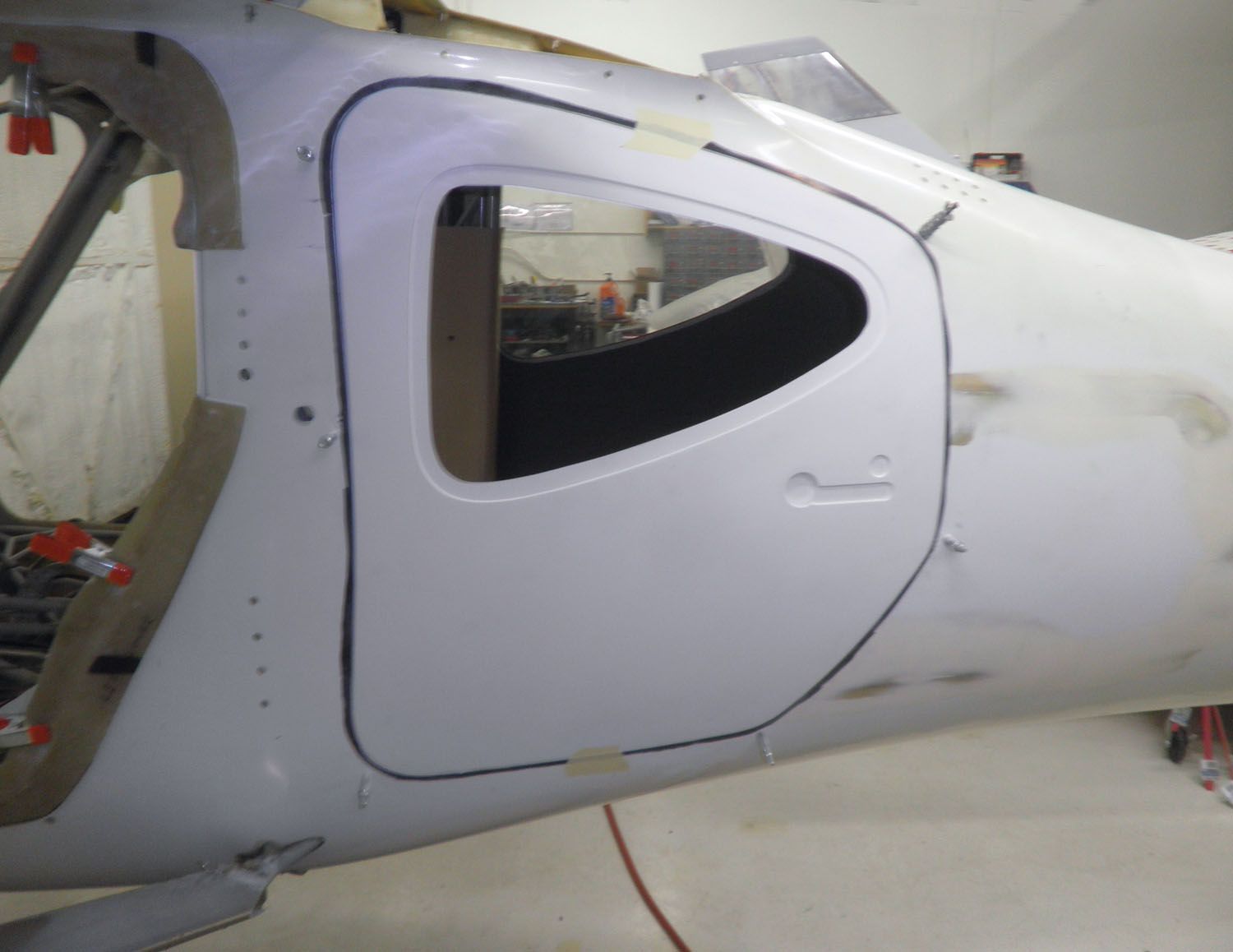
Lastly, a modification that is starting to become more popular is changing the baggage door to a larger Sportsman-type door. This is quite a bit of work, but it makes access to the baggage area much easier. This is popular with people who like to camp or take bikes with them. By comparison, the original GlaStar baggage door seems like a mail slot.
Performance
When the GlaStar was first introduced, the numbers from the factory regarding performance and build times were, shall we say, optimistic. A 75% power cruise speed of 145 knots was touted but never achieved by actual builders. With a 180-hp engine and a constant-speed prop, a cruise speed of 140-142 knots was possible under ideal conditions. With a smaller O-320 engine and a fixed-pitch prop, cruise speeds of closer to 130 knots were about the limit of what was possible. Of course, speeds would vary with gear configuration, wheel pants and fairings, propeller type and pitch, and other factors like intersection fairings.
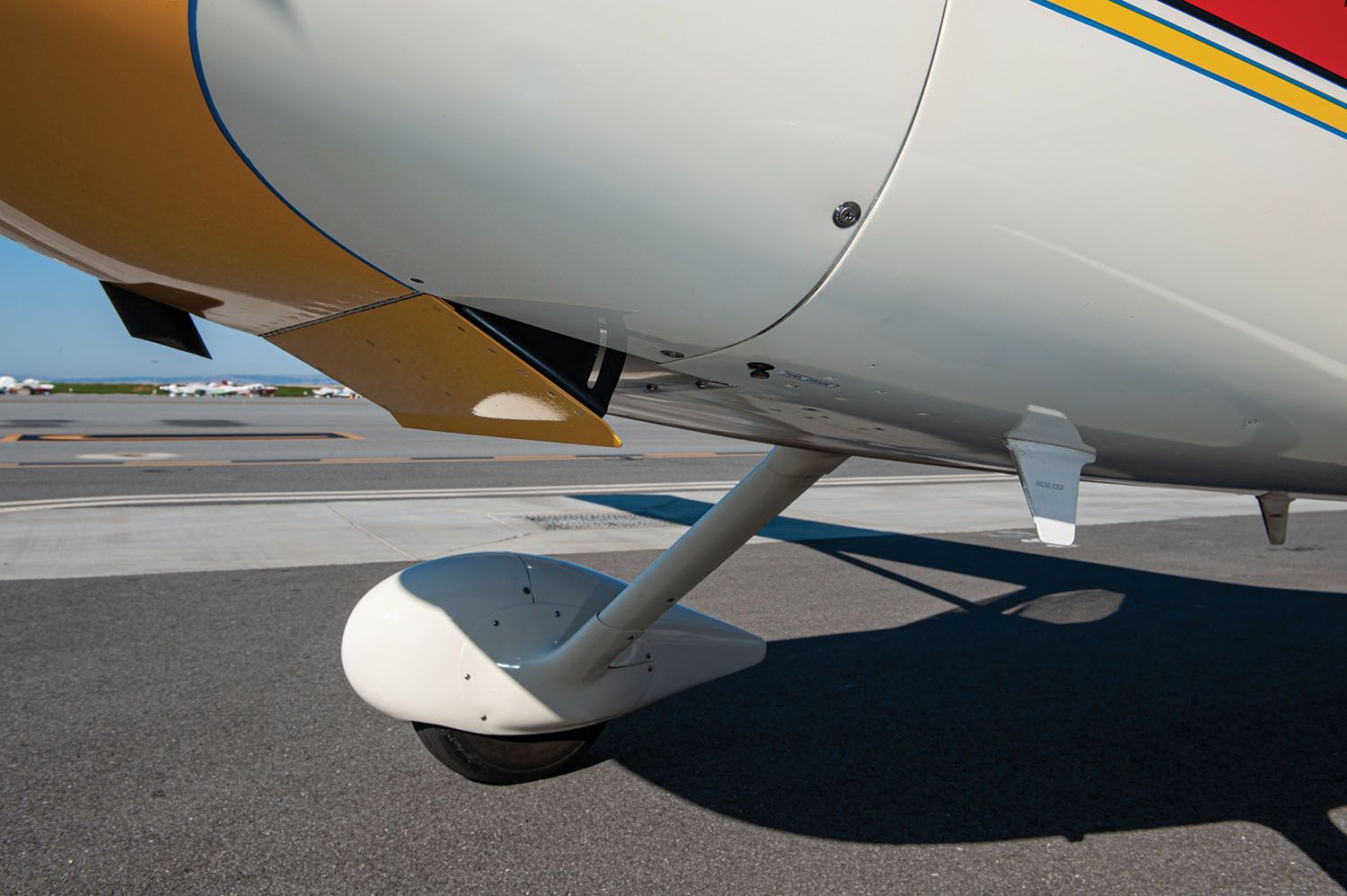
A stall speed of 39 knots was listed but, again, was a bit optimistic—a number like 43 knots more readily achievable by actual owners. That said, the numbers are pretty impressive for a utility airplane. There are certainly faster homebuilts—for instance all RVs except the RV-12—and there are aircraft that will land slower, such as the Super Cub and its many clones. But the unique capabilities of the GlaStar are hard to match. You can put some fat tires on your GlaStar and land on a sandbar for a day’s fishing. You can do that with an RV-8 once, but you will have to walk home. You can make a Super Cub go 130 knots if you point the nose straight down, but…you get the idea.
A real performance advantage that may go unnoticed by many potential buyers is the GlaStar’s crashworthiness. The steel cage that surrounds the pilot and passenger makes the airframe very robust, and the high wing and two large doors make it possible to extract yourself from an overturned plane with relative ease. To be sure you can still do yourself in with a GlaStar, but you will have to work at it.
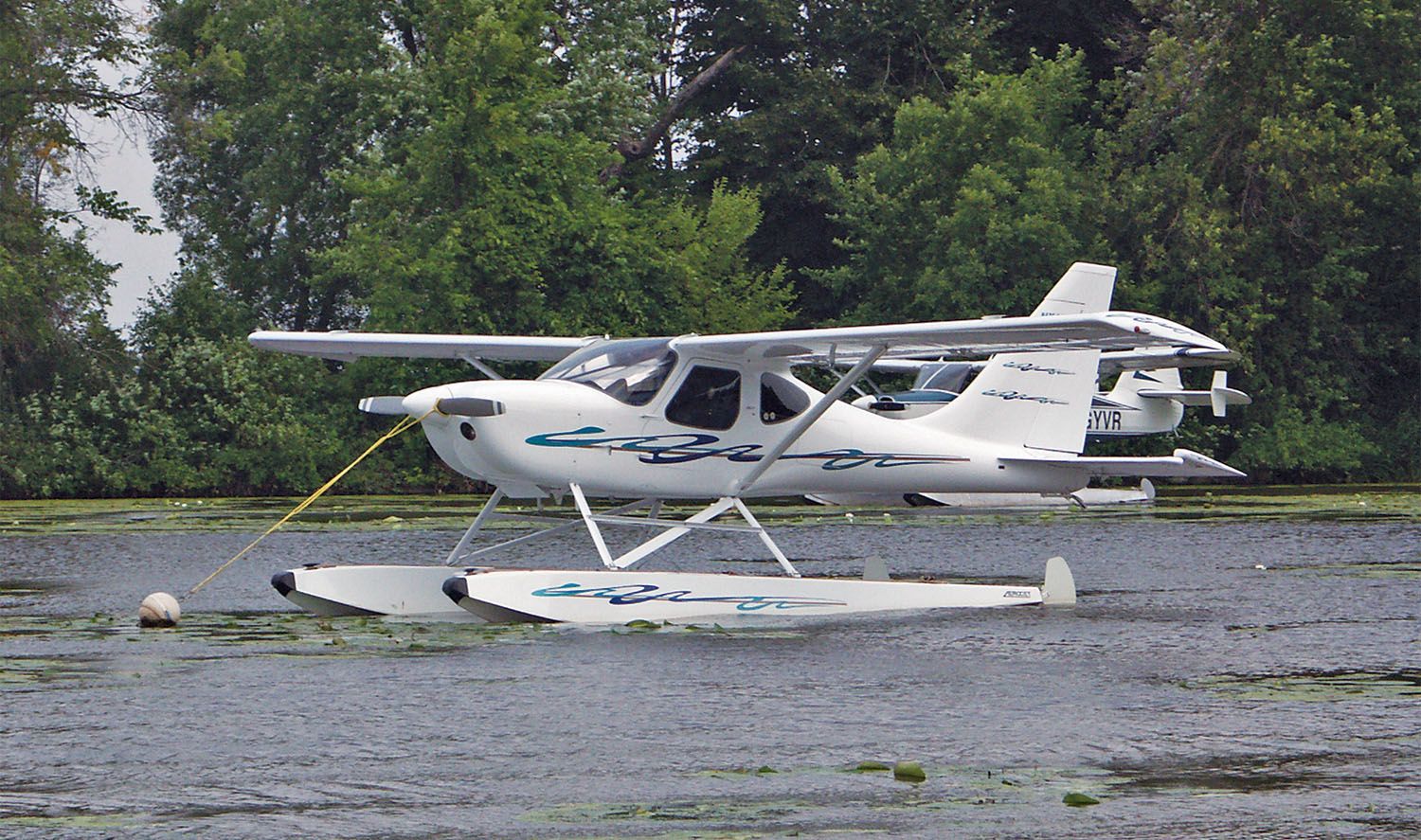
Performance improves with power—no surprise there. Thus, planes with the O-360 engine will command a premium, as will planes with a constant-sped prop. This means that a buyer who plans to fly where the density altitude is high will really want to limit their search to a plane with 180 hp. At lower levels the 150 and 160-horse engines will do a great job of getting you around economically, but at 10,000 feet density altitude there is no substitute for cubic inches.
Owner Support
Owner support is a mixed bag at this time. The Glasair Aircraft Owners Association (GAOA) is active and strong with many members who are glad to show a newcomer the ropes and offer support. The association includes Glasair, GlaStar, and Sportsman owners and builders, but there are plenty of GlaStar owners and builders within the ranks, some with 20 years or more of building and flying experience.
Factory support has the potential to get a lot better. One of the last things the management did was to throw away the molds for all of the fiberglass parts for the GlaStar. No one thought there was any chance that there would ever be a factory-new GlaStar again, but the molds were the only source of major fiberglass parts in case of a serious wreck. At the same time, the company announced their official end of factory support for the GlaStar.
But that’s not the end of the story. New management at Glasair Aviation has pledged to support the two-seat GlaStars going forward, and since the GlaStar shares many parts with the Sportsman 2+2, there are many components still available that are common to the two. Between that and three private shops that work on GlaStars, there isn’t much that can’t be repaired or upgraded if an owner would need such services.
Values
As with any discussion on value, there’s a wide range in the GlaStar world. Nice, clean, period-correct examples can be found with asking prices around $60,000. The market values the 160-hp and 180-hp engines over the smaller ones, and strongly values conventional aircraft engines over auto-engine conversions. There have been newly completed GlaStars for sale with six-figure asking prices, but that’s at the very high end of the spectrum. As always, individual aircraft condition (build quality and maintenance) and equipment are part of the value equation.
Conclusion
The GlaStar is a great two-place plane. It does not so much do one thing extremely well as it does a lot of things pretty well, much like a Cessna 182. With their limited production of 600 or so planes flying and their popularity it may take some time to hunt down the GlaStar you want, but it is worth the effort.
Photos: Richard VanderMeulen, Carlos Emmons, Dave Prizio, and Jonathan Apfelbaum.


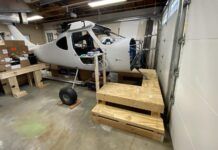

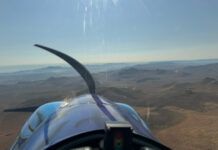
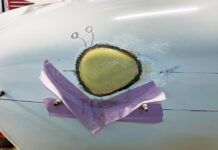
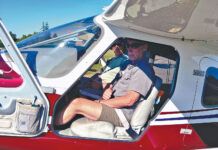
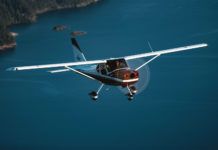
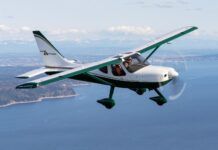
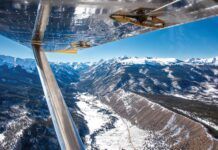
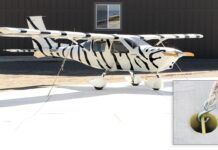
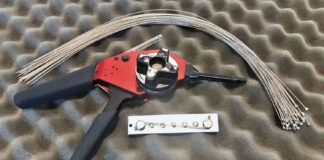

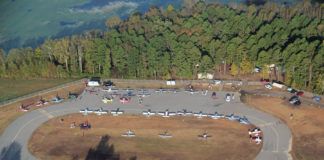
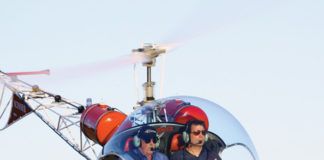
Thanks for the great article. I’ve lusted for a GlaStar ever since I found out about them, and I’m always glad to learn more about them. I’ve had the opportunity to handle the controls of one, with a Subaru engine, and taxied in another. I’m a big guy – tall, and with broad shoulders, so when I find a plane that fits, I remember it. And, this one fits me.
One thing you seemed to have missed is the nose gear bracket on the firewall. Other reviews I’ve read have mentioned that bracket is a little weak, and easy to bend on a relatively hard landing. Some people have replaced that bracket with the beefier one from the Sportsman. I don’t know what’s involved, but I think the nose gear bracket should also be a must inspect item.
I’ve read at least one horror story about Subarus in Glastars, and thought that if I could get a plane with a Subbie, I could always re-engine it with a Lycoming, but your article seems to say it’s better to find a Lycoming powered Glastar to start with.
Richard, if you find a pre-owned GlaStar that fits your budget, there is a great group of helpful builder/owners on the Glasair-Owners Assn site willing to help with any questions and advice you may need.
In regard to the GlaStar nose gear, the attach fittings are very robust and have never suffered failure of any sort based on my 25 years of history with this design. The nose gear is suitable for gravel or grass-field operations with the caution that wet, saturated “soft-field” operations should be avoided or performed with soft-field technique.
The heavier GW Sportsman model uses a more robust nose strut which can be retrofitted to a GlaStar with the addition of nose gear attach brackets welded to the firewall chromoly steel truss tubes.
Ted Setzer (member, GlaStar development team)